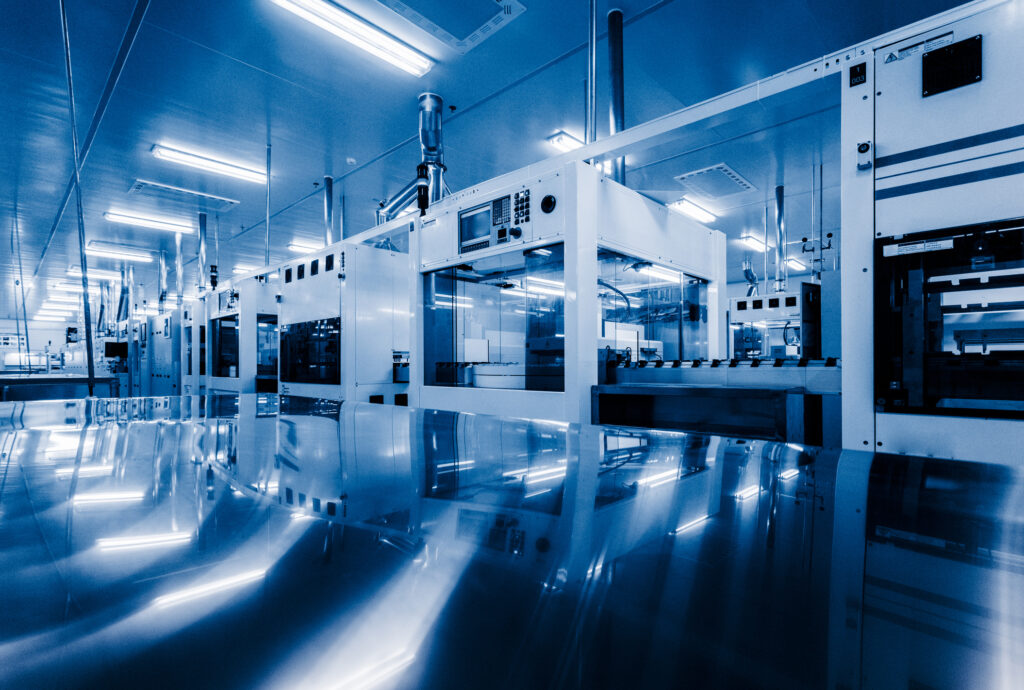Cleanroom News, Cleanrooms
An Infinite Resource – Could Solar Power and Battery Storage Offer Real-World Solutions for Our Increasing Energy Needs?
What do self-driving cars have in common with solar power? If you were hoping we’d be announcing the development of a car that runs purely on the power of the sun you are a more optimistic reader than we’d imagined! Perhaps one day we’ll be able to bring you that kind of news but, for the moment, such a technological leap lies firmly in the future. With that said, Tesla, manufacturers of the high level Model-S semi-autonomous car, does have an interest – both technologically and fiscally – in developing solar panels. So what is the link between automotive manufacturing and solar power? Let’s investigate…
Just over one month ago Tesla and Solar City, a 10-year old company based in Foster City, California, announced a merger, with Tesla acquiring the company in what ultimately became a hotly contested race to partnership. During the course of negotiations, Solar City entertained no fewer than seven other ‘suitors’ in addition to Elon Musk’s iconic company, in addition to proactively soliciting other bids. Ultimately, Tesla’s bid prevailed, with Solar City’s executives approving the $2.6 billion price tag.(1)
But why was Tesla – known for its interest in cars and space exploration – so intent on scooping up a solar panel manufacturer?
Whilst not meteoric, Solar City’s growth in a rapidly heating market is still impressive. Founded in 2006 by two brothers, Lyndon and Peter Rive, and operated initially – in classic Californian style – out of a spare bedroom, the company now employs approximately 14,000 people, serves over 260,000 customers, has installed products in 27 states, and has deployed almost 2.16 gigawatts worth of solar panels to date.(2) And it’s a hot market. According to projections by the national trade association Solar Energy Industries Association® (SEIA), in the third quarter of 2016 solar represented 26% of all newly installed electric capacity, generating enough electricity to power 6.2 million homes. Additionally, from the second quarter of 2015 to the same period this year, prices dropped 18%, bringing the overall price slice to 63% down since 2011.(3) And the solar industry is a ‘50 state market,’ with market shares from Massachusetts to Hawaii. All of which is excellent news for proponents of clean, sustainable, renewable energy, and for shareholders in both Tesla and Solar City.
But is this market confined solely to developed, ‘first world’ countries? An experiment in Ta’u, a paradisiacal desert island located some 4000 miles west of San Francisco, suggests otherwise. A partnership between the American Samoa Economic Development Authority, the Environmental Protection Agency (EPA) and the Department of the Interior, working with Tesla and Solar City, enabled the construction of a solar power and battery storage-enabled microgrid that supplies 1.4 megawatts capacity combined with 6 megawatt hours of storage.(4) Prior to the construction of the grid, the island suffered power outages and rationing. If the local hospital needed power for operating rooms and critical care, residential homes and local businesses went dark. Harnessing what is to all intents and purposes an infinite resource, the island moved from reliance upon fossil fuels such as diesel to a cleaner – and safer – alternative. And the costs of power generation also decreased. As an interview with island resident Keith Ahsoon noted: ‘The system is expected to offset the use of more than 109,500 gallons of diesel per year. Factoring in the escalating cost of fuel, along with transporting such mass quantities to the small island, the financial impact is substantial.’(5)
And while all this news is profoundly significant for the solar power industries and for the islands, communities, and individuals they serve, the question remains as to its impact upon the contamination control industry. As we highlighted in our recent article ‘What Do Cleanrooms, Mars, and Cooking Have in Common’, solar panels, and specifically photovoltaic panels, are – by necessity – manufactured in cleanroom environments. In the semiconductor industry, for instance, the manufacture of a 300mm wafer demands an environment so sterile that not even an errant ion can be permitted to contact the surface of the wafer. Not to mention dust and other particulate matter. Sound hard to achieve such a level of contamination elimination? It is – but that’s why we serve the kinds of sterile environments that can handle such stringent requirements. In fact, according to a report for the Rexroth Bosch Group, ‘Key Considerations for Cleanroom Conveyors,’ cleanroom environments can be used to ‘encompass the entire assembly/manufacturing process [for solar panels], leaving only packing and shipping to be done in a non-cleanroom area.’(6)
That is the ideal. But, as the market expands and costs are driven down, it may be that we see manufacturers leaning increasingly towards a modular approach where each manufacturing step is considered as a self-contained process that can be carried out within a variety of different cleanroom environments. And this is where it gets very interesting for our industry. Wafer production, for example, typically requires a Class 1 to 1,000 cleanroom, while cell production is in the Class 1,000 to 10,000 range. And modular assembly requires the use of modular conveyors, which, in turn, lean heavily on the use of ‘standard cleanroom components, such as HEPA filters, cool zone sterilization, and hermetically sealed entry/exit gates to minimize the risk of product exposure [to contaminants.]’(7)
So in a competitive market is there an alternative to the need for – and expense of – a cleanroom environment to produce these panels? According to some enthusiasts, the fabrication of relatively efficient solar panels could indeed be a project for the ‘weekend warrior.’ Popular websites such as instructables.com offer guides on building solar panels to generate power for an average residential home. The costs associated with such a project? A mere $200. Sound enticing? Perhaps. To the armchair scientist with a low budget and a high desire for bragging rights, constructing a solar cell array to power a home – and perhaps to feed back to the grid – may sound like an attractive idea. But there’s the broader picture to consider. In a checklist offered by the Solar Electricity Handbook (2016 edition), the issue of cold solders, for example, is brought to light. A cold solder joint between one or more adjacent cells can result in temperature arcs that could potentially start fires. Then there’s the matter of blemished, chipped or damaged materials that are by nature already supremely fragile and liable to breakage. Moreover, localized heat buildup within the frame of the home-made panels, combined with the natural heating of the panel surfaces, may result in an aggregate spot temperature as high as 800 celsius (1472 fahrenheit) – easily hot enough to burn a home to the ground.(8)
And furthermore, given that it is illegal in the US to attach non-approved power generation equipment to the utility grid, selling back excess power from those home-made solar panels could end up being a costly undertaking with legal fees outweighing solar-generated profits. Perhaps the $80-140 price tag for a professionally manufactured solar panel with a 5-year warranty and a projected 25-year lifespan does not seem so onerous after all…
Do you use solar panels for your home or business? What would entice you to invest in a solar future? We’d love to know your thoughts!
References:
- http://fortune.com/2016/08/31/tesla-solar-city-elon-musk-merger/
- http://blog.solarcity.com/10-years-of-creating-a-brighter-future/
- http://www.seia.org/research-resources/solar-industry-data
- http://blog.solarcity.com/island-in-the-sun/
- ibid
- http://www.valin.com/Newsletters/2014/April/Technology/Bosch-Rexroth-Cleanroom_Conveyors-Technical-Paper.pdf
- ibid
- http://solarelectricityhandbook.com/Solar-Articles/build-your-own-solar-panels.html






















Pingback: An Infinite Resource - Could Solar Power and Ba...
Pingback: Innovations in Renewable Energies and Battery Storage - EuroScientist journal
Pingback: Innovations in Renewable Energies and Battery Storage - EV News Today